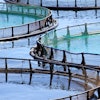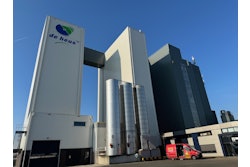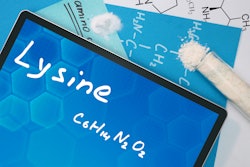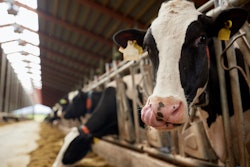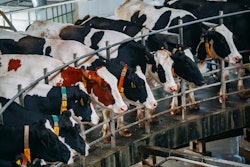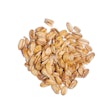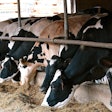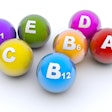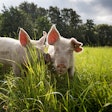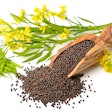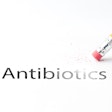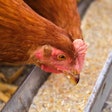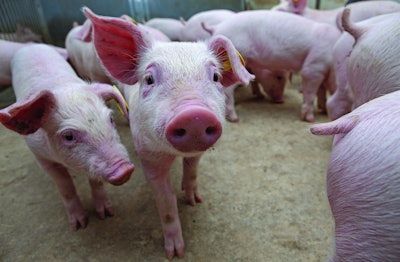
In chemistry, "monovalent" and "divalent" refer to an atom’s ability to form bonds with other atoms and its oxidation state (redox state). Monovalent copper (Cu⁺), losing one electron, carries a +1 charge and is very reactive — especially under acidic or anaerobic conditions — resulting in rapid, strong antimicrobial effects, rapidly disrupting bacterial membranes.
This is particularly valuable when piglets are most vulnerable, e.g. during weaning. In contrast, divalent copper (Cu²⁺) loses two electrons, has a +2 charge, and is more stable, ensuring a predictable release in the digestive tract. Its divalent property can lead it to bind with compounds like phytic acid in plant-based feeds, potentially limiting its bioavailability.
This article explores the unique properties of a monovalent copper, and compares its benefits to those of traditional divalent copper sources, e.g., hydroxy chlorides, sulfates and chelates, in the context of piglet nutrition. A review of key studies examines how these copper forms differ in their interactions with feed components, their impact on pathogenic bacteria and their influence on piglet performance.
Monovalent and divalent copper: interactions with feed components
In animal mineral nutrition, copper is essential not only to meet the mineral requirements of animals but also to promote growth and overall health. However, when addressing mineral requirements, it is important to consider potential antagonisms, such as the interactions between trace minerals and phytic acid. Phytic acid is a potent chelating agent that can bind mono- and divalent metal ions, forming the complex known as phytate. Several studies have shown that phytic acid has a higher affinity for divalent ions.
An in vitro trial performed at the Universitat Autònoma de Barcelona, investigated the impact of Cu sources — monovalent Cu oxide versus divalent Cu sulfate — and dosage (0, 15, 150 or 300 ppm Cu) on the phosphorus released by phytase. At pH 4.5 (the pH of piglet stomach), the study observed that divalent Cu sulfate reduced the phytic phosphorus released by phytase, much more than monovalent Cu oxide. The reduction in phytic phosphorus release became even more pronounced when Cu supplementation exceeds nutritional levels (150–300 mg Cu/kg).
Therefore, the primary impact of monovalent and divalent Cu atoms is their interaction with chelators like phytate.
Monovalent and divalent copper: impact on pathogenic bacteria
The antibacterial effects of Cu vary depending on its redox state, with the monovalent form (Cu+) demonstrating stronger efficacy in anaerobic conditions compared to the divalent form (Cu2+). Research has shown that Cu+ is more effective than Cu2+ at acidic pH (piglet stomach) in inhibiting gram-positive and gram-negative bacteria. For example, the minimum inhibitory concentration (MIC) for E. coli and Staphylococcus aureus being half that of Cu2+.
An in vitro study performed in the Freie Universität Berlin compared the antibacterial properties of different divalent Cu sources (sulfate, hydroxy chloride, chelate) to monovalent Cu oxide. The objective was to identify the most effective option for controlling Streptococcus suis growth. The study reported that the growth of S. suis was significantly delayed when cultured in media containing monovalent Cu oxide, starting after nine hours, while growth in all divalent Cu sources began after approximately three hours. These findings support previous research that demonstrates the superior antibacterial properties of monovalent Cu ions over divalent ions.
Title: Impact of copper sources on Streptococcus suis growth
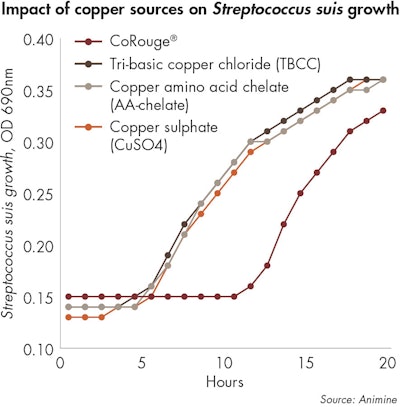
Figure 1. The effect of divalent copper (Cu) sources and a monovalent Cu source (CoRouge) on growth of Streptococcus suis under in vitro conditions (pH 7.4). (Source: Animine)
In vivo studies have also highlighted differences in microbiota composition in piglets fed 150 mg Cu/kg from either divalent Cu sulfate or monovalent Cu oxide. Piglets fed monovalent Cu oxide exhibited higher alpha diversity (Shannon index) at d35 after weaning compared to those fed CuSO4. Additionally, in growing pigs fed 250 mg Cu/kg, monovalent Cu oxide was more effective in reducing pathogenic bacterial populations, such as those from the Rikenellaceae family and the Holdemanella genus.
Thus, the second impact of monovalent and divalent Cu atoms is their ability to repress pathogenic bacteria.
Monovalent and divalent copper: impact on piglet performance
To assess the effect of divalent and monovalent Cu sources on pig performance, trials were performed under different geographical zones, to explore the diversity of results.
A trial conducted under U.S. conditions (Figure 2A) compared the effects of monovalent Cu oxide (CoRouge) and divalent hydroxy chloride Cu source (TBCC) at varying inclusion levels on piglet performance. The results showed that monovalent Cu oxide at 50 and 75 ppm performed similarly to TBCC at 150 ppm, while monovalent Cu oxide at 100 ppm gave the best growth outcomes.
Under EU condition, the monovalent Cu source was compared to different divalent chelated Cu sources, all at the level of 90 ppm of added Cu (EU regulation). A tendency for higher daily gain was observed in the monovalent Cu treatments compared to the other chelated Cu sources (Figure 2B).
Headline: Impact of copper sources of ADG (kg/d) of piglets
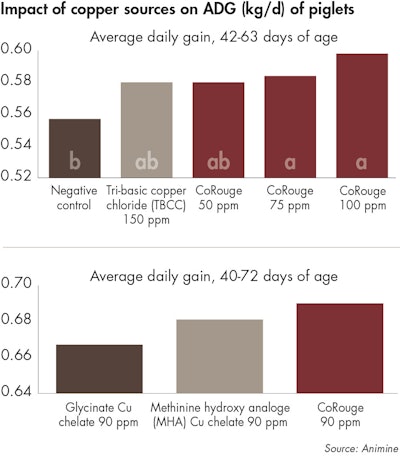
Figure 2. The effect of divalent copper (Cu) sources and a monovalent Cu source (CoRouge) on the average daily gain (ADG, kg/d) of piglets raised under different contexts of production. (Source: Animine)
These findings are consistent with previous studies in pigs, which reported improved performance with monovalent Cu supplementation compared to a divalent sulfate source. The results suggest that monovalent Cu can achieve similar or even superior performance at lower inclusion levels compared to traditional divalent Cu sources, making it a more efficient and sustainable alternative.
Take-home message
Monovalent Cu oxide offers distinct advantages over traditional divalent copper sources in piglet nutrition. Due to its lower risk of interaction, it does not alter phytase efficacy, allowing for enhanced phosphorus release, promoting better nutrient utilization. Additionally, its stronger antibacterial efficacy helps control pathogenic bacteria more effectively.
The monovalent copper source demonstrates the potential to improve piglet growth performance at lower inclusion levels, making it a more efficient and sustainable choice for modern animal nutrition practices.
References available upon request.
Editor’s note: According to Animine, CoRouge is the only monovalent copper source available on the feed additive market.

